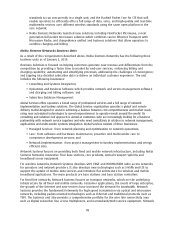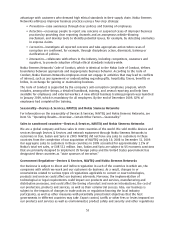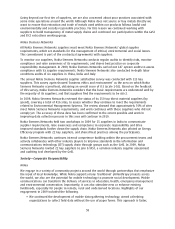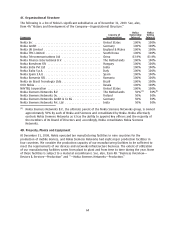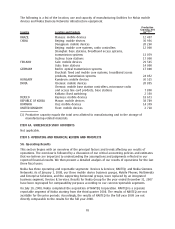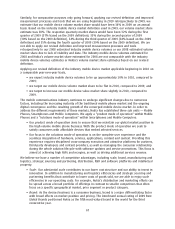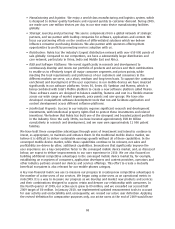Nokia 2009 Annual Report Download - page 60
Download and view the complete annual report
Please find page 60 of the 2009 Nokia annual report below. You can navigate through the pages in the report by either clicking on the pages listed below, or by using the keyword search tool below to find specific information within the annual report.Going beyond our first tier of suppliers, we are also concerned about poor practices associated with
some mine operations around the world. Although Nokia does not source or buy metals directly we
want to ensure that extraction and trade of metals used within our products follows lawful and
environmentally and socially responsible practices. For this reason we continued working with
suppliers to build transparency of metal supply chains and continued our participation within the GeSI
and EICC extractives working group.
Nokia Siemens Networks
All Nokia Siemens Networks suppliers must meet Nokia Siemens Networks’ global supplier
requirements, which set standards for the management of ethical, environmental and social issues.
This commitment is part of the contractual agreements with suppliers.
To monitor our suppliers, Nokia Siemens Networks conducts regular audits to identify risks, monitor
compliance and raise awareness of its requirements, and shares best practice on corporate
responsibility management. In 2009, Nokia Siemens Networks carried out 147 system audits to assess
compliance with its supplier requirements. Nokia Siemens Networks also conducted indepth labor
conditions audits of six suppliers in China, India and Italy.
The annual Nokia Siemens Networks supplier satisfaction survey was conducted with 313 key
suppliers. This survey again showed ‘business ethics and environment’ as the area on which Nokia
Siemens Networks scored best, obtaining an overall score of 8.3 (scale 110). Based on the feedback
of this survey, Nokia Siemens Networks considers that the basic requirements are understood well by
the majority of its suppliers, and that suppliers find the requirements to be strict.
In 2009, Nokia Siemens Networks reviewed the status of its 150 top direct material suppliers (by
spend), covering a total of 416 sites, to assess whether they continue to meet the requirements
related to Environmental Management Systems. The review showed that approximately 76% of sites
meet Nokia Siemens Networks requirements, and work continues with those suppliers who did not
comply yet. The accuracy of these data has been confirmed to the extent possible and work in
improving data collection process in this area will continue in 2010.
Nokia Siemens Networks held two workshops in 2009 for 15 suppliers in India to communicate
supplier requirements, raise awareness and competence in corporate responsibility and drive
improved standards further down the supply chain. Nokia Siemens Networks also piloted an Energy
Efficiency program with 22 key suppliers, and shared best practices among the participants.
Nokia Siemens Networks continues internal competence building within the procurement teams and
actively collaborates with other industry players to improve standards in the information and
communications technology (ICT) supply chain through groups such as the GeSI. In 2009, Nokia
Siemens Networks invited 22 key suppliers to join ETASC, a common industry supplier assessment
and auditing tool developed by the GeSI.
Society—Corporate Responsibility
Nokia
We engage in a variety of community projects around the world through partnerships that emphasize
the input of local knowledge. While Nokia supports many ‘traditional’ philanthropy projects across
the world, we also see the potential for mobile technology to promote social development. Mobile
communications can transform the delivery of services in education, health, emergency management
and environmental conservation. Importantly, it can also stimulate new or enhance existing
livelihoods, especially for people in remote, rural and underserved locations. Highlights of our
engagement in 2009 included the following.
• We continued the development of mobile datagathering technology, aimed at helping
organizations to collect field data without the use of paper forms. This approach is faster,
58



